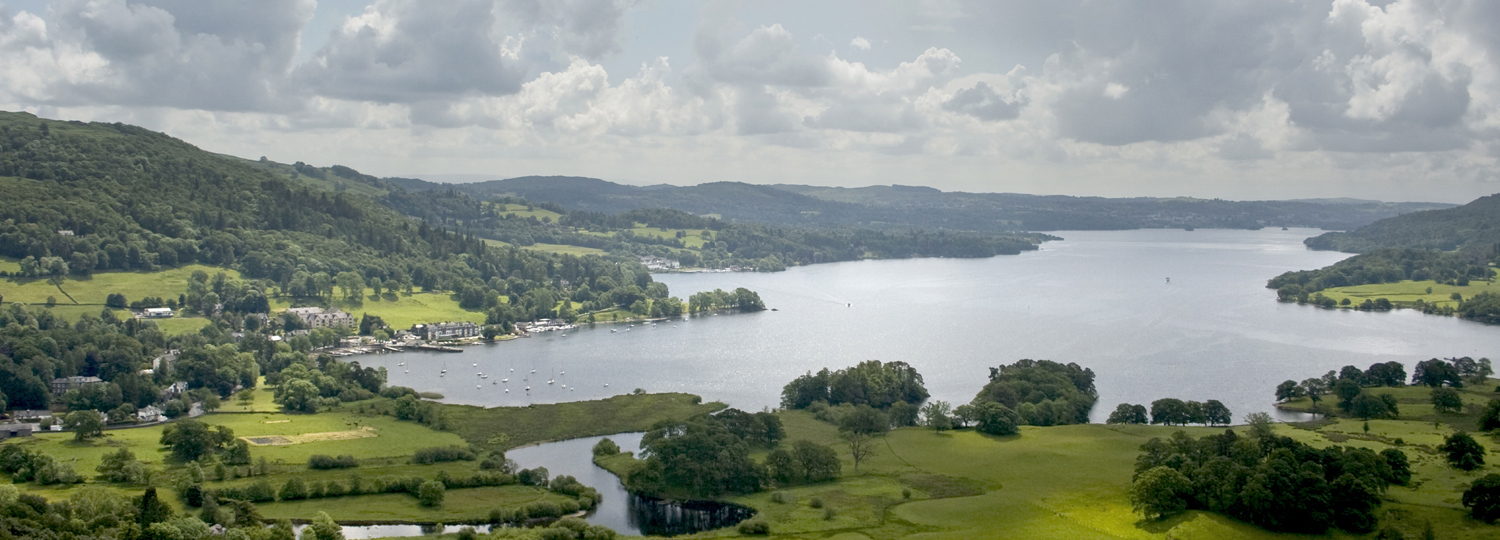Windermere is the largest natural lake in England. It has an area of 17km2 and a maximum depth of 64m. It was created 13,000 years ago during the last major ice age and is consequently inhabited by arctic charr (Salvelinus alpinus) that became landlocked there at the time. Arctic charr appear on the UK List of Priority Species because of their extremely high biodiversity conservation value.
Arctic charr are a cold-water species and the least resistant of the salmonids to increases in temperature associated with a warming climate. Their population levels have declined in both of the lake's basins over the last 20 years. This study is assessing the effects of climate change, eutrophication and the ingress of invasive species on the decline in arctic charr in Windermere.
Pressures
Eutrophication: Windermere suffers from eutrophication, particularly in the south basin, and algal blooms are a consequence of a high level of phosphate enriching the water. Nutrient sources included a sewage treatment works and fertiliser runoff from surrounding farm land.
Climate change: Water temperatures have been increasing due to climate change. This has led to a delay in the spawning of the arctic charr.
Invasive species: Competition for zooplankton from invasive species such as roach (Rutilus rutilus) may be taking place. Roach, introduced as live bait by anglers, have undergone a population increase recently. This is believed to be due to warmer lake temperatures.
Management responses
Improved sewage treatment, including phosphorus (P) stripping was implemented at two adjacent wastewater treatment works in 1992. The use of live baiting for fishing has also been reduced to lower the risk of introduction of further invasive species.
Monitoring the environment
Day and night hydroacoustic surveys have been undertaken at monthly intervals since 1989 to monitor Arctic charr populations in the north and south basins. Other species of fish were monitored using gill-netting during the autumn of 2010. Long-term monitoring of the Windermere fish population, plankton community and water quality indicators by CEH is continuing.
- Details of project work on Windermere by CEH and its partners.
- Windermere was also the site of the Windermere Catchment Restoration Programme, part-funded by a grant from the Heritage Lottery Fund.
- A special issue of Freshwater Biology provides an overview of and insights from more than six decades of long-term monitoring at Windermere.
Environmental responses
In the late 1990s, the reduction in P inputs from the waste water treatment works led to a short-term improvement in dissolved oxygen concentrations in the depths of the lake. However, oxygen concentrations have decreased in recent years and are now below the arctic charr's tolerance levels in the deeper waters. The population of Arctic charr in Windermere has been declining steadily since 1990. Catch-Per-Unit-Effort (CPUE) data collected in both basins has highlighted this decrease, with data collected in 2010 (north basin: 0.58 fish h-1) (south basin: 0.24 fish h-1), showing a decrease from the values recorded in 2009 (north basin: 0.97 fish h-1) (south basin: 0.88 fish h-1).
Populations of roach and fellow cyprinid, the common bream, have increased, probably as a result of increasing water temperatures in the lake. These fish species are believed to have an advantage over Arctic charr in the competition for zooplankton prey, especially under conditions of increasing temperature and nutrient concentrations.
Contact
Related links
Return to UK Lake Restoration project home
Lake observatories
top image: Shutterstock.com
